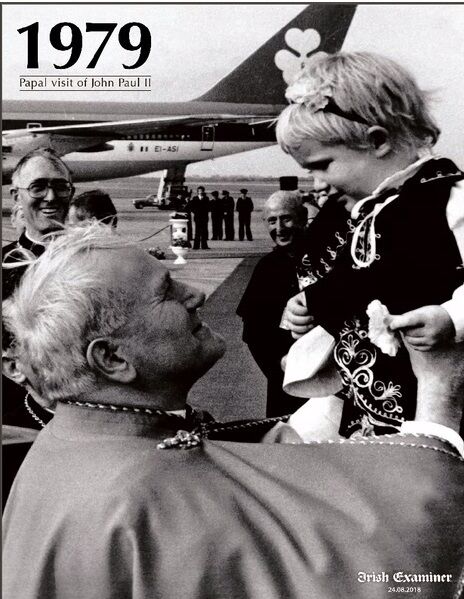A look back at how the last Papal visit conquered the hearts and minds of the Irish people
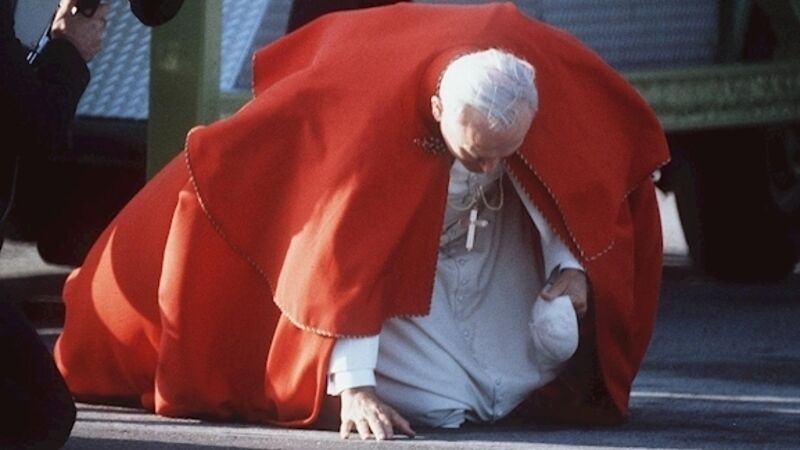
The spiritual leader came, saw, and conquered the hearts and minds of the Irish people in 1979, writes
IF your name is John Paul, the chances are you were born shortly after the visit of Pope John Paul II to Ireland in 1979.
One in 10 boys born in Ireland in 1980 was named in his honour and the thousands of Irish-born John Pauls comprise the living legacy of his historic visit, the first by a Pope to Ireland.
For 48 hours the whole country basked in a frenzy of religious and communal fervour as Pope John Paul summited one emotional peak after another — kissing the tarmac at Dublin airport, celebrating Mass at Phoenix Park, appealing to the men of violence in Drogheda, touring the ancient monastery of Clonmacnoise, lighting a candle at the gable wall of the church in Knock and, most notably, bonding with the youth of Ireland in Galway.
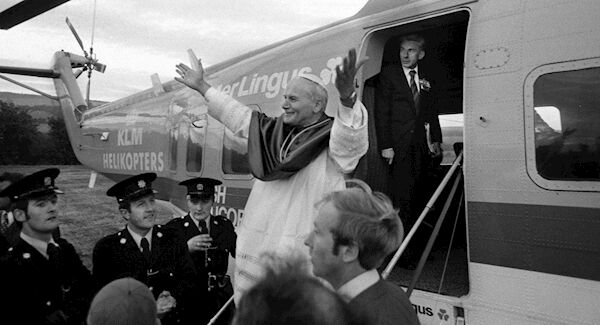
More pilgrim than Pope, the most popular spiritual leader of the modern Church came, saw, and conquered the hearts and minds of the Irish people young and old, religious or not.
Through it all, each moment on his journey was punctuated with spontaneous outbursts of clapping, cheering, chanting and singing from the mammoth crowds who gathered everywhere he went. The American spiritual hymn He’s Got the Whole World in His Hands became the background music and anthem of his visit.
On the first day of his visit, September 29, 1979, more than 1.5m people gathered for the papal Mass at the Phoenix Park, the nation’s largest ever gathering, eclipsing even John McCormack at the Eucharistic Congress in 1932 and the monster meetings of Daniel O’Connell more than 150 years before.
It was a punishing schedule. On that day alone, the pope’s itinerary included the Vatican, Rome Airport, Dublin Airport, the Phoenix Park, Drogheda, back to Dublin and then meetings with President Patrick Hillery as well as the Irish hierarchy.
His itinerary was so full that the pope jokingly claimed the Irish were trying to kill him on his first day.
The pilot of the Aer Lingus 747 that brought John Paul from Rome flew over Phoenix Park en route to Dublin airport. It was a moment of excitement, delight and rapture, bordering on hysteria. Tens of thousands of flags were waved and a roar like a primordial beast arose from the huge crowd, followed by another an hour later when he returned to land by helicopter.
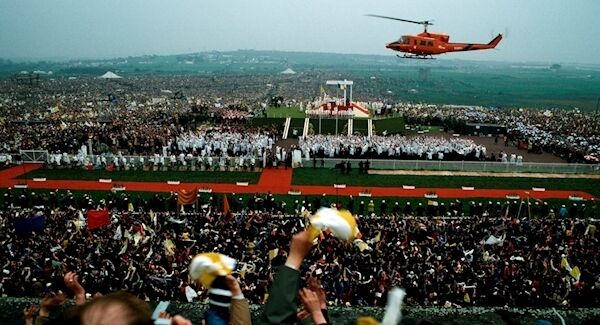
It was there that worshippers got their first glance of the famous popemobile — a mechanised, more utilitarian version of the Sedia gestatoria, the ceremonial throne used as part of papal ceremony for nearly a millennium.
As the Pope made his way to the giant open-air altar, a forest of cardboard periscopes shot up to get a glimpse of the famous figure adorned in papal white.
It was, for many, more spectacle than sacrament. While the Pope celebrated Mass before the papal cross, thousands of mostly young people took advantage of the empty roads around Dublin to slip out of the Phoenix Park and head for Galway to get the best positions for a papal youth service there the following day.
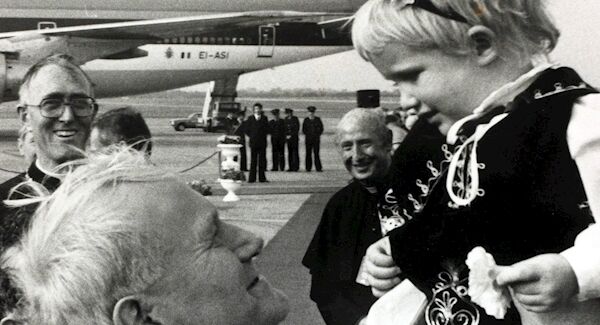
Later that day, he made his way to Drogheda where he showed his determination to do more than simply appeal
to the faithful. He also wanted to challenge them. He had planned to travel north of the border to Armagh but two IRA atrocities on the eve of the visit put paid to that — the murder of Lord Louis Mountabatten in Mullaghmore, Co Sligo, and the two booby-trap explosions that killed 18 British soldiers near Warrenpoint, Co Down.
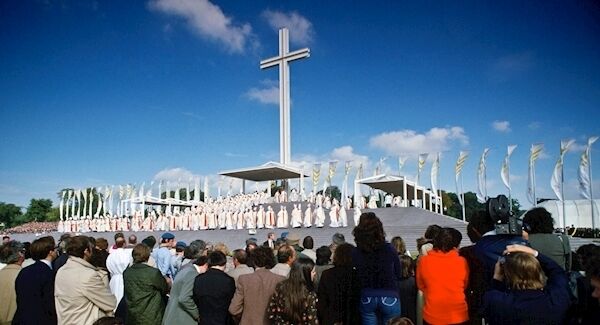
In the wake of those murders, there was a real danger that Loyalist paramilitaries would target Pope John Paul II if he went to Northern Ireland. A short few weeks before the visit, it was announced that he would not travel north of the border. This meant that a Mass at St Patrick’s Cathedral in Armagh — Ireland’s ecclesiastical capital — had to be cancelled.
Organisers were left in a quandry but a farming family’s dilemma solved the problem, proving that the Lord does, indeed, work in mysterious ways.
If Terry Grant hadn’t been forced to deal with an attack of ragwort — a noxious weed — on his farm, the Irish hierarchy might never have considered it a suitable venue for the Pope.
“It was early August — a week or so after we cut the ragwort — and I got a phone call,” Terry recalls in an RTÉ radio documentary.
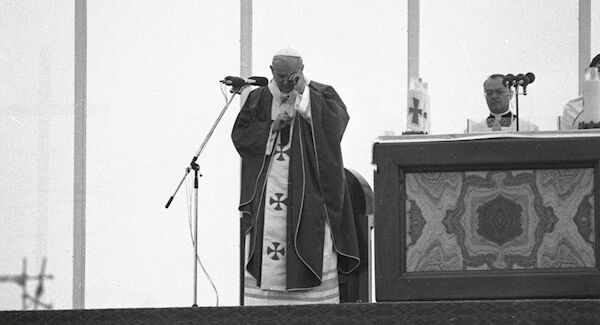
It was from a local monsignor who described Terry’s post-ragworth farmland as “palatial” and more than suitable to host the Pope. It was situated in Killineer, near Drogheda, Co Louth and, although south of the border, it was within
the all-important diocese of Armagh.
The Grant family and the Irish hierarchy expected around 40,000 to attend. In fact, 300,000 turned up on a warm, sunny day. Many more took up vantage point at nearby Killineer house.
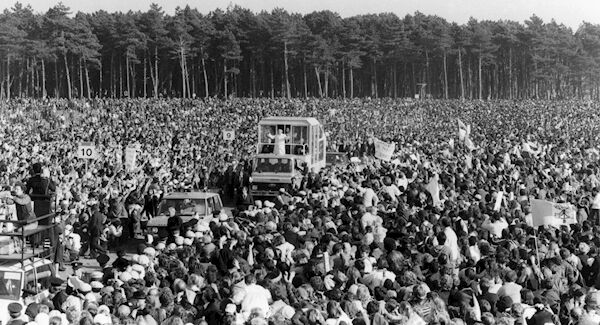
Speaking forcefully, John Paul warned the people of Ireland that the continuing violence would ruin the “land you claim to love” and “the values you claim to cherish.”
Then, in the most dramatic words spoken during the visit, he made a direct appeal to the men and women of violence: “On my knees I beg you to turn away from the path of violence and return to the ways of peace,”
Within days the Provisional IRA had rejected his plea. “In all conscience, we believe that force is by far the only means of removing the evil of British presence in Ireland,” the IRA said in a statement.
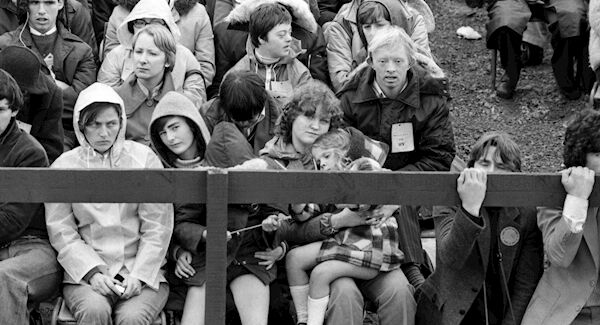
The next day was one of marked contrast as the Pope headed to Galway to celebrate a Youth Mass for 300,000 at Ballybrit racecourse.
It was more a folk festival than a religious celebration, with trendy clerics like Bishop Eamon Casey and Fr Michael Cleary orchestrating events. This was long before either of them gained notoriety as hypocritical philanderers.
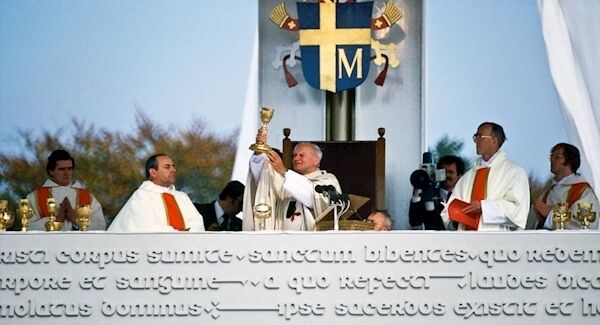
What made Galway special was the ability of John Paul to connect, through word and gesture, with the youth of the nation. Addressing the 300,000 young faces before him, he declared: “When I look at you, I see the Ireland of the future.”
He then uttered the famous words: “Young people of Ireland, I love you.” The applause and cheers that followed lasted longer than the pope’s homily.
Nothing could top that — not the service at Knock attended by 450,000, the visit to Clonmacnoise or the singing of the 400,000 who bid him farewell at the Greenpark racecourse outside Limerick on October 1.
After that final Mass, Pope John Paul left Ireland from Shannon Airport travelling to Boston to begin a six-day tour of the United States. The first ever papal odyssey to the land of St Patrick was over.
